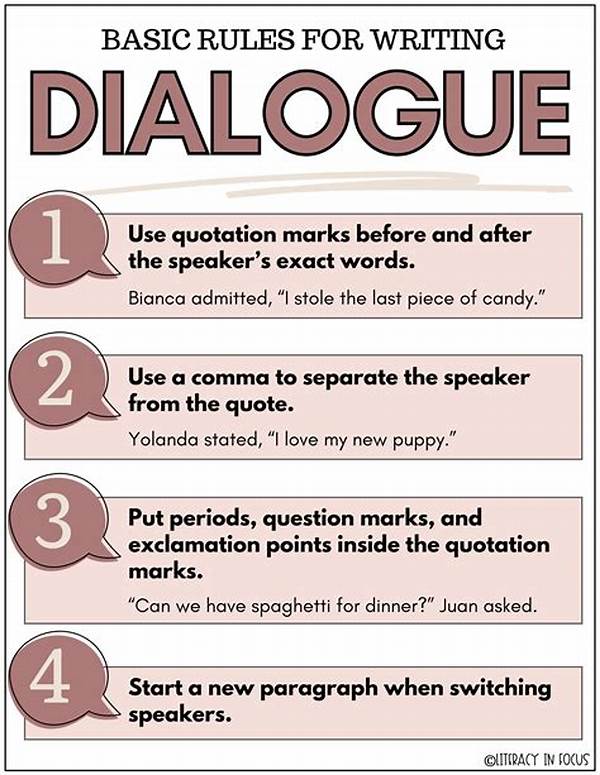In the world of writing, crafting authentic dialogue can be one of the most challenging yet rewarding aspects of storytelling. Dialogue breathes life into characters, making them feel real and relatable to readers. When executed correctly, it draws readers in, painting vivid images in their minds while providing insights into both plot and character development.
The Importance of Authentic Dialogue in Creative Writing
Authentic dialogue in creative writing serves a vital function—it’s the heartbeat of any narrative. When characters speak, it gives them dimension, making the story rich and engaging. Well-crafted dialogue can reveal a character’s personality, motivations, and relationships. It naturally drives the story forward, creates tension, and delivers crucial information without feeling forced. But what constitutes authentic dialogue? It’s the delicate balance of speech that sounds true to life while serving the narrative’s purpose. In essence, it’s about crafting conversations that resonate with readers, grounding them in the world you have created.
In achieving authentic dialogue, writers must pay close attention to the nuances of speech, the subtle cues of conversation, and the unique voices of their characters. Listening to conversations in daily life, observing how people interact, and understanding the context in which dialogue occurs is crucial. The goal is not to replicate real conversation word for word, but to capture its essence. Good dialogue is slightly edited life—it maintains realism but is selective and purposeful. Authentic dialogue in creative writing is a powerful tool that engages the reader, builds characters, and propels the narrative forward.
Tips for Writing Authentic Dialogue
1. Know Your Characters: Understanding your characters inside and out is key to authentic dialogue in creative writing. Each character should have a distinct voice reflecting their background, age, and personality.
2. Avoid Overly Formal Language: Conversations in real life are rarely formal. Authentic dialogue in creative writing often mirrors natural speech, which can be fragmented and informal.
3. Incorporate Subtext: Real conversations are filled with underlying messages. Authentic dialogue in creative writing often includes subtext to add depth.
4. Use Dialogue for Conflict: Conflict can heighten tension and drive your story. Authentic dialogue in creative writing effectively incorporates conflict to engage readers.
5. Read Aloud: Hearing your words spoken can help you identify stilted or unnatural phrases, ensuring authentic dialogue in creative writing.
Crafting Authentic Dialogue with Natural Sounding Language
Creating authentic dialogue in creative writing involves more than just accurately representing speech—it’s about crafting interactions that resonate on a deeper level with your audience. The natural-sounding language is key to this. When a piece of dialogue feels too ‘written’, it can pull readers out of the immersive world an author has painstakingly constructed. Effective dialogue reflects real speech patterns but is refined to avoid the mundanity and repetitiveness of actual conversation.
The nuance in crafting such dialogue is balancing the realism of speech with the need for clarity in storytelling. Writers often streamline dialogue to ensure it moves the narrative forward, which means the inclusion of only the most telling, engaging, or informative exchanges. Additionally, dialogue can serve multiple purposes—developing character, revealing backstory, or foreshadowing coming events. Choosing what and when a character speaks involves making strategic decisions that prioritize the story while remaining true to each character’s voice.
Exploring the Natural Sounding Language in Dialogue
1. Pace and Rhythm: Natural-sounding dialogue has a flow. Pacing helps create tension and reflects realistic speech patterns.
2. Broken Sentences: Just like in real life, characters might stumble, hesitate, or change direction mid-sentence in authentic dialogue in creative writing.
3. Regional Dialects: Including dialects can add realism, but should be done sparingly to ensure clarity.
4. Consistent Character Voice: Characters should maintain a voice that’s consistent with their personality and background.
5. Emotional Beats: Authentic dialogue in creative writing includes emotional nuances, adding layers to interaction which resonate with readers.
The Role of Dialogue in Plot and Character Development
Authentic dialogue in creative writing is not merely about capturing how people speak; it’s about using these conversations effectively within the broader context of storytelling. Dialogue is instrumental in character development. Through what characters say—and what they choose not to say—insights into their motivations, internal conflicts, and personal growth are revealed. The way characters interact with one another can also illustrate dynamics like power balances, affections, or hostility that might not be immediately apparent through exposition alone.
Furthermore, dialogue is pivotal in advancing plot. Authentic exchanges between characters often serve as catalysts for narrative progression, whether by introducing new information, resolving—or further complicating—conflicts, or delivering thematic revelations. Well-placed dialogue can escalate tension, offer relief, or provide critical transitions within the story’s tempo. Thus, mastering dialogue craft enables writers to harness it as one of the most dynamic tools in their storytelling arsenal.
Summary of the Natural Sounding Language in Dialogue
When writers pursue authentic dialogue in creative writing, they strive to create an illusion of reality that serves the fictive truth. The goal is to craft speech that promotes the narrative while maintaining an air of authenticity. This requires writers to be both keen observers and adept editors. Observing real-life conversations provides insight into natural speech patterns, including the ebb and flow of dialogue, the use of slang, tone, and how people dance around subjects through subtext and implication.
The refined process of editing this raw material into crisp, meaningful dialogue brings the magic to life. Real speech can be mundane and meandering, but dialogue requires the essence of conversation—captured with specificity and care—to engage readers while illuminating characters and advancing the plot. The best dialogue leaves a lasting impact, revealing nuanced aspects of character and story with clarity and purpose. By achieving this, writers create that perfect blend of authenticity and artistry that draws readers into their world, inviting them to experience the narrative as though eavesdropping on life itself.
